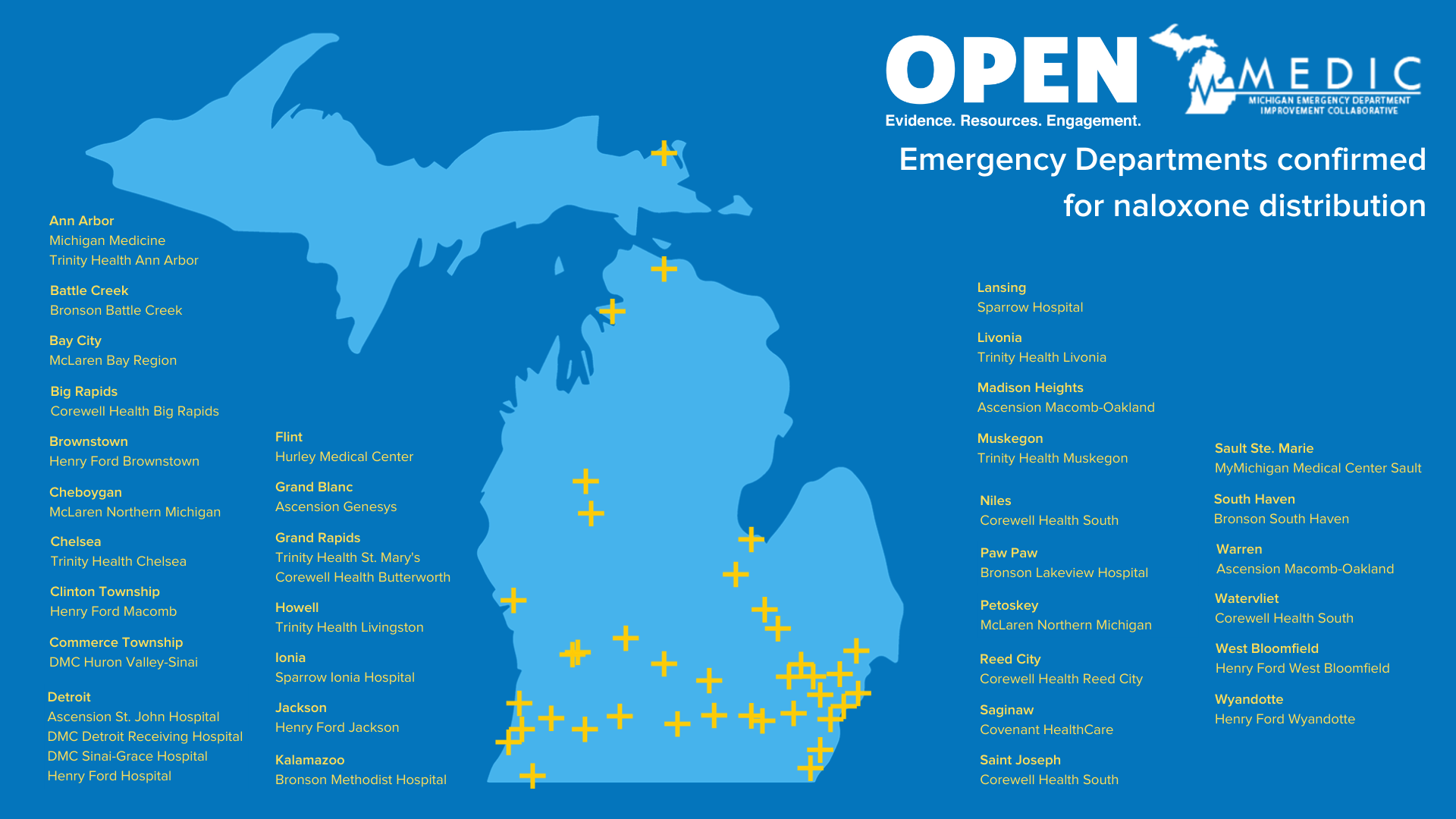OPEN and Michigan Emergency Department Improvement Collaborative (MEDIC) are excited to have reached over 5,000 naloxone kits distributed to at-risk patients this spring. Through our Emergency Department Naloxone Distribution Program, we aim to provide patients most vulnerable to future overdose this life-saving overdose reversal medication to take home with them. “Naloxone is the most effective way to reverse an overdose. When someone is experiencing an overdose, the thing that’s so dangerous is that it slows down their breathing to the point of stopping. Administering naloxone allows that person to be able to breathe again and receive further care,” explains Ellie English, a Clinical Implementation Specialist with OPEN. The significance of this milestone is realized as English states, “This is 5,000 patients that are potentially going to be given another chance to get into recovery [from substance use].”
Targeting emergency departments (ED) is especially impactful because according to recent studies, a high percentage of patients that leave the ED after a non-fatal overdose will experience a fatal overdose within 24 hours.1 It’s important for patients to leave with naloxone in-hand versus a prescription, as only 1.1% of patients have been demonstrated to fill a naloxone prescription after a non-fatal overdose within 30 days.2
With support from the Michigan Department of Health and Human Services (MDHHS) and Blue Cross Blue Shield of Michigan (BCBSM), OPEN and MEDIC partnered to develop a naloxone rescue kit distribution program specifically designed for implementation in emergency departments across Michigan. We were determined to have our highest risk patients to leave the ED with Naloxone in-hand and free of charge. Distribution began in March 2020, and despite a global pandemic, partnering emergency departments understood the importance of this program. “We started distributing in the midst of COVID, but that didn’t slow anyone down. Our partners continued to provide this resource and really pushed this program while maintaining new COVID guidelines.” The network of participating emergency departments has steadily grown to include now 38 emergency departments across 22 counties in Michigan.

“This program is incredibly important for people to access naloxone because overdoses happen every day,” stated English. “Emergency department post-discharge overdose rates for non-fatal overdoses are high, so sending patients home with naloxone kits from the emergency department is a crucial access point.” And while hitting this milestone is incredibly exciting, there is still plenty of work to be done. Going forward, OPEN and MEDIC plan expansion of this program and hope to help even more Michigan communities. “We want to continue to collaborate with more hospitals and take advantage of further exposure to get these kits to even more Michigan patients.”
Recently, naloxone was approved to sell over the counter at pharmacies, a crucial step in making this lifesaving resource available to more people. “Naloxone going over the counter is a big step in increasing access. Next, we want to be able to get Naloxone into the hands of patients for free. We do know that sometimes, a prescription isn’t enough, they [high-risk patients] need to be sent home with it,” commented English.
Find more information and Naloxone resources here.
References: